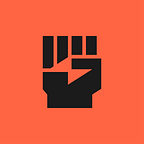Outsourcing Power.
2 min readAug 28, 2023
Outsourcing governance to the Power protocol is entirely possible, even for existing projects with their utility tokens. The process is as follows:
- Project token holders can acquire $power tokens through a new child DAO within the Power protocol.
- The amount of tokens they receive depends on their holdings of project tokens.
- The acquired $power tokens are locked within the DAO and cannot be withdrawn.
- The child DAO is granted access to the smart contracts of the project.
- Participants in the child DAO vote on specific transactions and modify the project contracts.
- Well-defined KPIs are established; for instance, project token growth or TVL within project contracts. Successful completion rewards governance participants, as outlined below, while failures lead to slashing. If a deadlock arises, the main Mother DAO steps in.
- In case of low governance activity, the $power of decision makers who don’t participate is slashed, and the quorum adjusts accordingly.
- The DAO possesses its own treasury, utilized to reward effective governance.
- Users are required to maintain a specific amount of project tokens to participate in governance. Diminished holdings decrease governance power, while increased holdings boost it.
- Governance power updates and KPI settlements occur at regular intervals based on initial DAO parameters.
- It’s feasible to swap treasuries between the child project DAO and the main Power protocol DAO. For instance, a child DAO can obtain Power tokens by contributing funds to the main DAO treasury (even in project tokens).
- Depending on KPI settlements, governance-locked Power may also be unlocked, generating additional revenue for decision makers. This scenario arises when the project’s token price rises, making the swapped tokens more valuable, and unlocking the $power tokens in the child DAO.
The fundamental concept is to segregate governance from token utility. Token utility remains unaffected by governance changes. However, the governance process transitions to the Power protocol, employing the skin-in-the-game approach. This approach can result in slashing of governance power tokens but won’t impact the original tokens negatively. Swapping treasuries between DAOs can foster synergy, enhancing the interaction between the Main DAO and Child DAO and potentially increasing the value of both.
